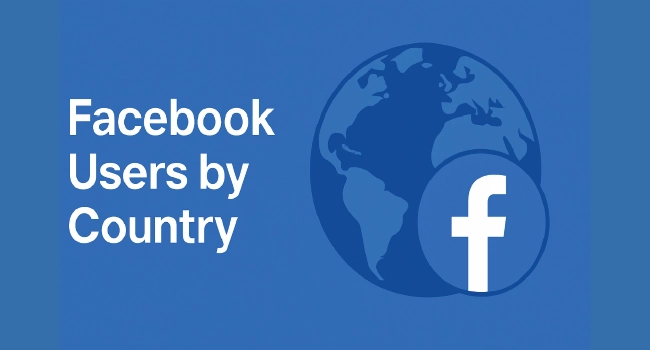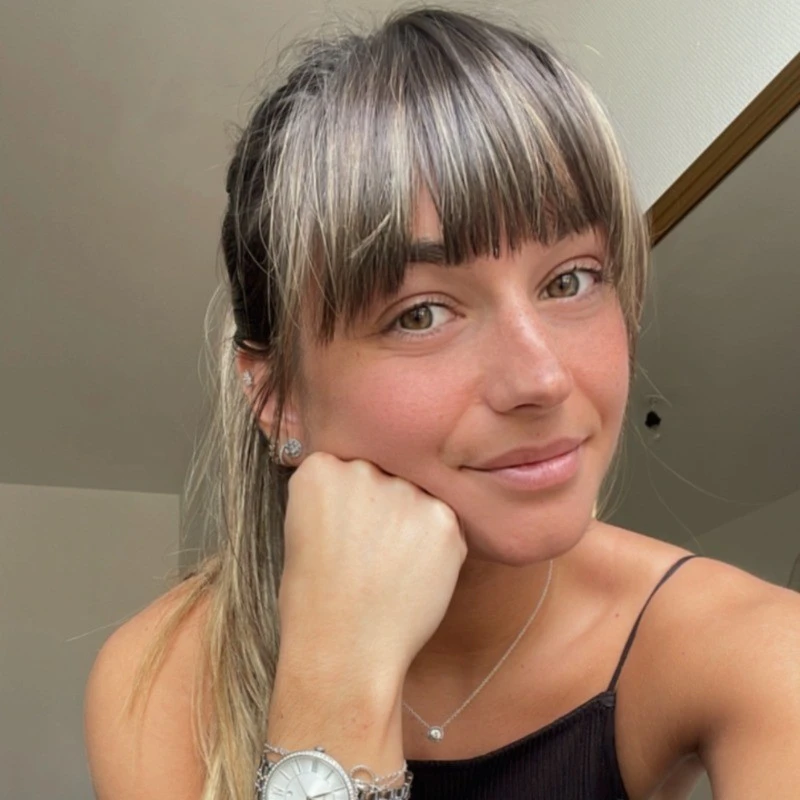
Facebook’s obituary gets written every year, yet nearly 3.1 billion people still use it monthly in 2025. The twist is reach isn’t uniform: scale depends on which country you target. A post that flies in India can flop in Germany, and the reverse is true.
This guide maps Facebook users by country, pairs hard numbers with context, and explains what they mean for timing, formats, and growth.
You’ll see why India and Indonesia drive volume, why the U.S. still drives revenue, and how Latin America, Europe, and Africa differ. If you plan campaigns, this is the practical, country-level playbook today.
Global Scale Of Facebook In 2025
Facebook is still massive, but adoption looks very different across regions. Global MAUs sit near 3.07–3.1 billion, yet growth now concentrates in Asia–Pacific and selected parts of Latin America and Africa, while North America and Western Europe have plateaued.
Read the global number as a headline, not a plan. Country-level nuance decides your media calendar: language, device mix, data pricing, and age structure all shift performance.
APAC alone contributes well over a billion users, driven by India, Indonesia, the Philippines, Vietnam, Thailand, and Bangladesh; Latin America’s anchor markets are Brazil and Mexico; Africa’s momentum comes from Nigeria, Egypt, South Africa, Kenya, and Ghana. Your budget follows these concentrations.
Total Users And Growth Distribution
In practical terms, India (~320–330M) ranks #1 by user count; the United States (~180–200M) remains #2 by value density. Next come Indonesia (~120–130M), Brazil (~110–115M), and Mexico (~90–92M).
Beyond the top five, strong clusters include the Philippines (~85–90M), Vietnam (~70M), Thailand (~50M), Turkey (~50–55M), Bangladesh (~44–46M), Egypt (~45M), Pakistan (~45–50M), Nigeria (~40–45M), the United Kingdom (~36–40M), Germany (~31–33M), and France (~28–30M). Ranges reflect rolling 2024–2025 reporting.

Why Country-Level Data Matters
Penetration and age shape outcomes. The U.S. has high penetration and older usage that favors community groups and news; India has huge volume, mobile-only habits, and video-first behavior; Indonesia and the Philippines lean heavily into groups, messaging, and short-form clips.
Identical creative will not perform the same in those environments. Treat Facebook users by country as a targeting system, not trivia.
Devices And Access Patterns
Mobile accounts for 90%+ of access in most growth markets and 95%+ in India, Bangladesh, Pakistan, and sub-Saharan Africa. Desktop remains relevant in the U.S., U.K., and Germany for workplace browsing, but the ad experience you design should assume Android, prepaid data, variable speeds, and short dwell in emerging markets.
Subtitles, burned-in captions, and lightweight creative increase completion rates everywhere outside fixed-line strongholds.
United States: A Mature But Still Massive Market
The U.S. no longer fuels growth, yet it still drives monetization and culture.
User Numbers And Penetration
Active users land around 175–200 million, translating to well over half the population on platform. New sign-ups are slow because penetration is already high, but daily usage remains sticky among older cohorts, local communities, and interest groups.
Age And Behavior Trends
Millennials and Gen X dominate in the Facebook trends. Gen Z attention is fragmented across Instagram, TikTok, and Snapchat, which shifts Facebook's sweet spot toward family sharing, local news, buy/sell groups, and events. Video works, but link posts to trusted media and long comment threads still travel far when the topic is timely.
Monetization And Influence
Despite slower user growth, U.S. ARPU and ad demand are unmatched. Advertisers spend more per user, and U.S. politics, entertainment, and tech posts frequently set global conversation arcs. For planning, schedule around U.S. Eastern late morning to early evening and re-surface for Pacific primetime.
India: Facebook’s Largest User Base
India combines staggering scale with mobile-first behavior that shapes global features.
Scale And Reach
India's footprint sits around 320–330 million users, the largest national audience on Facebook. Urban centers like Delhi, Mumbai, and Bengaluru anchor content creation, while rural growth continues as data costs decline and 4G/5G coverage expands.

Mobile-First Usage
More than 95% of Indian sessions are Android + mobile data. Short-form video, group commerce, and education communities dominate engagement. Assets that load quickly, include captions, and open cleanly in-app outperform heavier creatives.
Algorithmic Impact
Because of its size, India's engagement patterns influence global ranking. When short, subtitled video and group activities rise here, they surface more broadly. If you need efficient scale, Hindi + English variants on Facebook ad trends, region-specific captions, and creator collaborations lift completion and share rates.
Southeast Asia And Latin America: Regional Powerhouses
These regions keep Facebook growing while Western usage levels off.
Indonesia And The Philippines
Indonesia contributes ~120–130M users; the Philippines adds ~85–90M. Both are mobile-centric, community-driven markets that lean into groups, messaging, and Reels. Local language captions and creator duets outperform generic brand spots.
Brazil And Mexico
Brazil sits near ~110–115M users and Mexico ~90–92M. Expect passionate comment culture, strong political discourse, and heavy live video. Portuguese and Spanish localization, plus geo-specific slang in captions, dramatically improves watch time and comment depth.
Cross-Border Patterns
SEA + LATAM users respond to practical value: deals, how-tos, local news, and creator-led recommendations. Peak windows follow commuting and late-evening habits; repost top performers across neighboring time zones within 12–18 hours to capture second waves.
Europe And Africa: Different Paths Of Growth
Europe stabilizes; Africa accelerates with cheaper data and broader coverage.
Western Europe Stabilization
The U.K. (~36–40M), Germany (~31–33M), and France (~28–30M) remain stable. Younger Europeans spend more time on Instagram and TikTok, so Facebook skews older and information-heavy: news, parenting groups, neighborhood forums, and marketplace.
Africa's Mobile Ascent
Nigeria (~40–45M), Egypt (~45M), South Africa (~20–25M), and Kenya/Ghana cohorts are rising as data plans become affordable. Usage centers on groups, classifieds, and community help. Lightweight video, offline-friendly links, and WhatsApp handoffs convert better than desktop funnels.

Language And Timing
Localization drives outcomes. Europe requires English + local language variants; Africa benefits from English, Arabic, French, or Swahili depending on market. Layer posting windows to hit European afternoons, then reshare for West Africa evenings.
Organic Vs. Paid Strategies
Competing in these massive markets requires credibility and visibility at launch. Organic growth - consistent posting, creator collabs, groups, and Reels - works, but initial traction is slow in crowded feeds.
Comments are the strongest social proof because they signal conversation quality, not just impressions. To accelerate the flywheel, CheapestFollowers offers a simple way to buy Facebook comments safely and affordably, adding realistic discussions that boost trust and improve ranking signals.
Use paid comments to seed momentum on your best posts, then keep the thread going by replying, pinning highlights, and remixing into Reels or carousels. The goal isn’t to fake engagement; it’s to prime discovery so real audiences find you faster.
Conclusion
Facebook is still the world’s largest network, but success is decided country by country. India and Indonesia deliver efficient reach, the U.S. delivers monetization, and Latin America and Africa deliver momentum through comments, groups, and video.
When you need a quicker start in crowded timelines for Facebook users by country, you can buy Facebook comments through CheapestFollowers to add credible discussion and lift your ranking signals. Pair that spark with consistent, localized content and you’ll convert country-level scale into measurable growth.
FAQs | Frequently Asked Questions |
Which country has the most Facebook users?
India leads with roughly 320–330 million users, giving it the largest single audience on Facebook. That scale pushes video and group features to the forefront across the platform.
How many Facebook users are in the U.S.?
The U.S. has about 175–200 million active users. Growth is flat, but spending power and ad demand keep it one of Facebook’s most valuable markets.
Why do Facebook user numbers vary so much by country?
Differences in internet pricing, device access, language, age mix, and competing apps change adoption. Mobile-first markets favor short video and groups; mature markets lean toward news, local forums, and marketplace.
